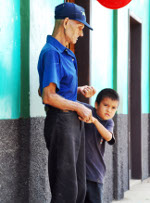Understanding the Effects of Aging
Author: tiger Published Under: Health
 For s
For seniors and others, there are many wonderful and amazing things that are involved with growing older. Unfortunately, despite all these wonderful aspects to aging, it does usually have a toll on the body. This is to say that over time, the effects of aging can be seen in the ease of movement of the individual and their other actions.
In many cases, the effects of aging on the body is a natural part of aging. For example, as the mind grows older, eventually the speed at which thoughts are processed begins to slow down. This does not have an effect on the actual intelligence of the senior or even the things they have learned over their life, but simply means it takes a little longer to generate a response to a specific action. This is normal and is not anything to be concerned about.
Of course, in many other instances, the effects of aging are not as natural and are instead the direct result of a disease or condition. Dementia is one common example of a disease that is not natural, with Alzheimer's being an example of dementia. Arthritis, osteoporosis, and glaucoma are all other examples of diseases that can affect seniors, greatly impacting their life.
The different diseases that affect the elderly can differ greatly and often have very different effects on the body. However, one of the most common side effects of growing older is a reduced ability to get around. Often, things like cooking, driving, walking, using the stairs, and even standing and sitting is no longer as easy as it once was.
There is also a much higher risk of injury for seniors, with injuries being a very serious concern for seniors. This is because even small injuries can be very difficult to recover from, with a recent study finding that after a serious injury, a senior is significantly more likely to require a move to an assisted living community. The same study also found that a hip fracture in someone over the age of 65 dramatically increased the likelihood of them dieing within the year.
As a result of the seriousness of a fall or other injury in a senior, it is very important to make an effort to reduce the chance that a fall will occur in the first place. There is no single way to do this, but instead it is important to evaluate each room fall risks.
For instance, the stairs are the most dangerous place in the home for the elderly. This is because of all the accidental deaths and hospitalizations that occur among those over 65, the majority occur on the staircase.
To address this issue, it is important to be very careful when away from home. Also, many seniors choose to install a stair lift in their home. Stair lifts are sort of like escalators, in that they do all the work of moving a person between floors. Except instead of the entire staircase moving, a metal track is attached to the stairs and a chair moves up and down the track. The main advantage to a stair lift, aside from simply making the stairs safer, is that it can be installed on most stairways without requiring major renovation.
The stair lift is but one example of the types of tools that can be used to help make a home safer and easier to use. However, it is important to not only focus on tools like this though, as often the actual condition of the home play a very big role in the likelihood of a senior fall.